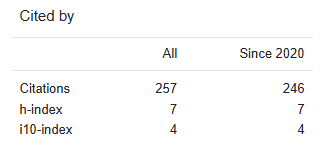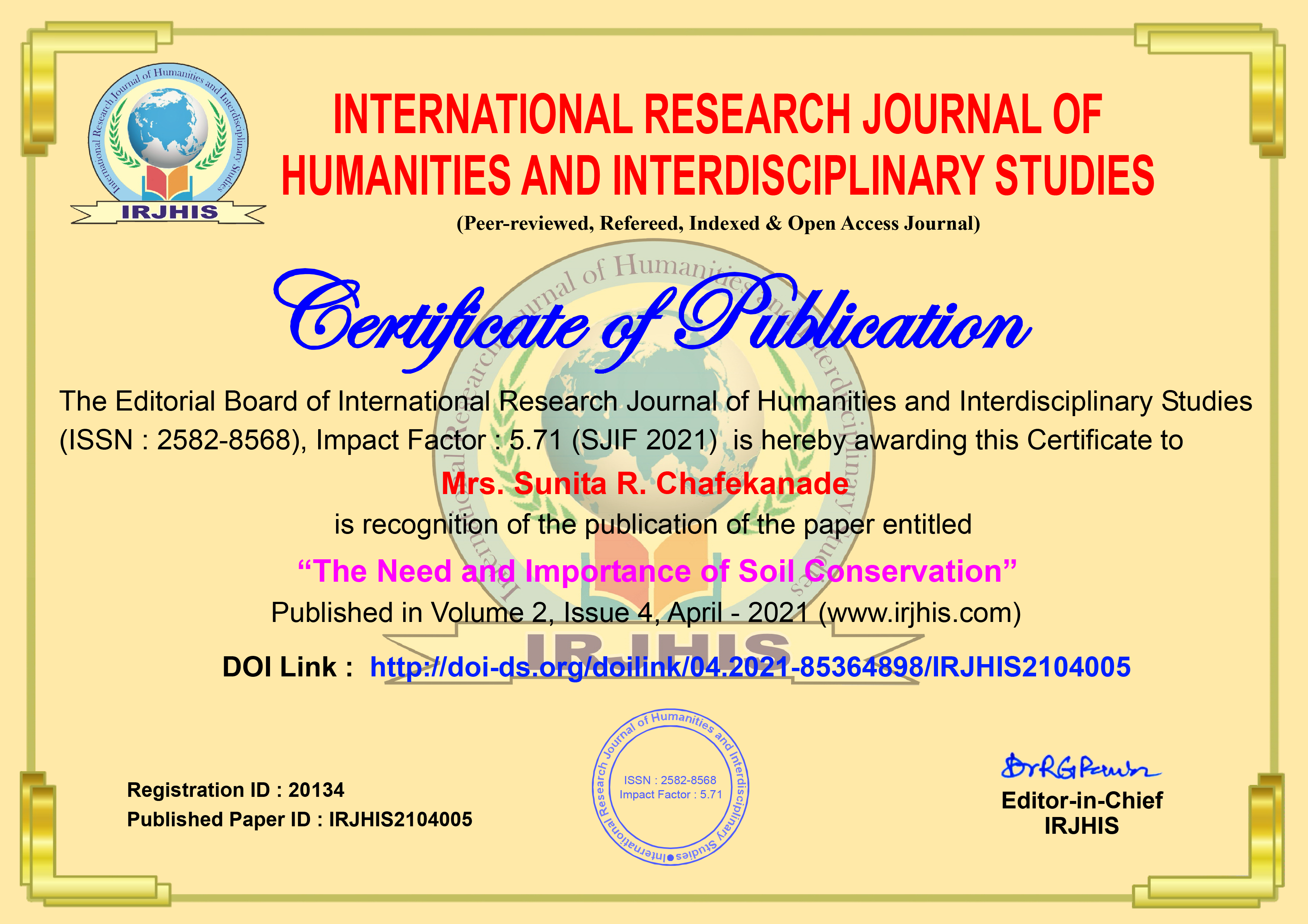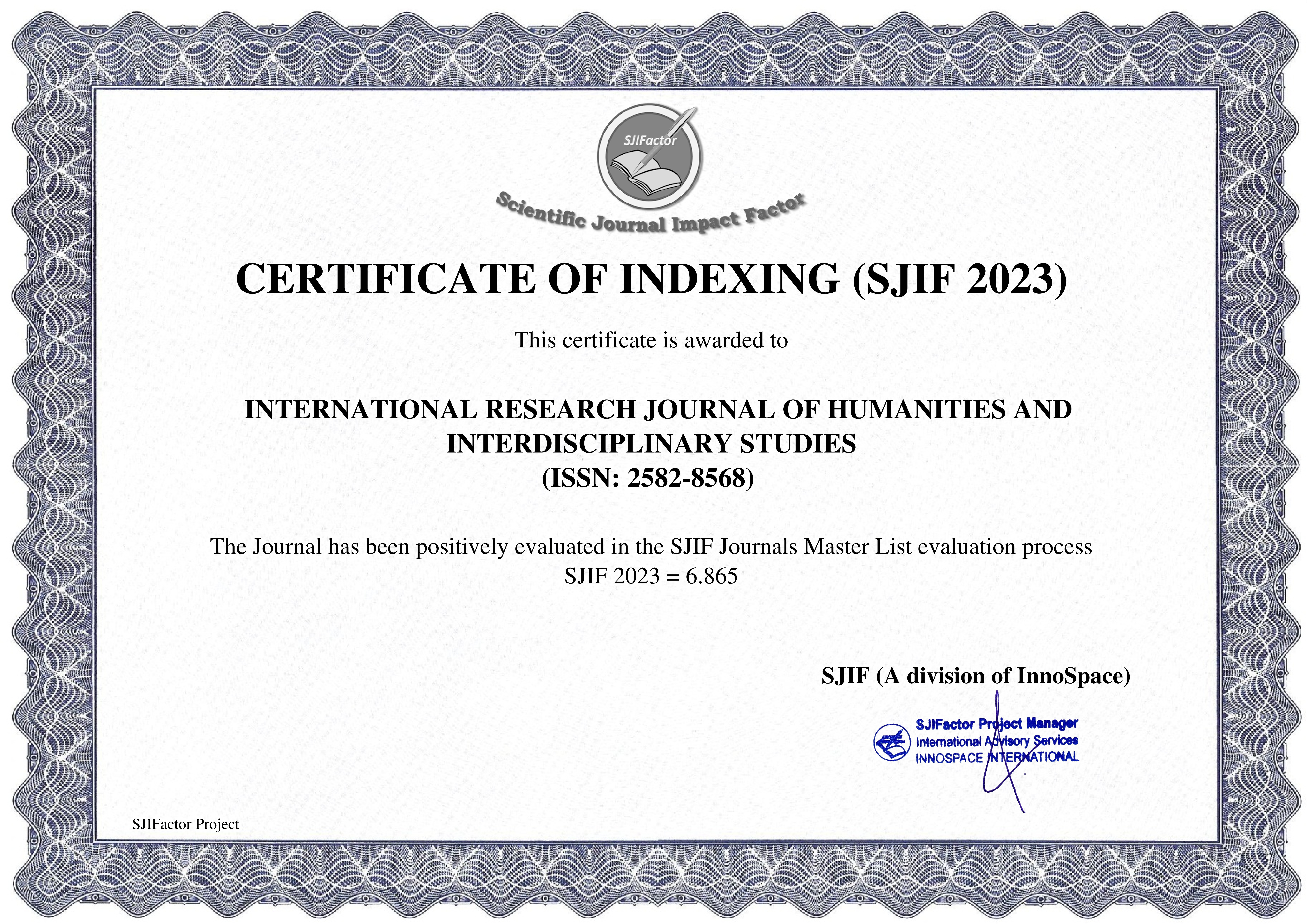Paper Details


Call For Papers
Volume 06, Issue 11
Frequency: 12 Issue per year
Paper Submission: Throughout the Month
Acceptance Notification: Within 2 days
Areas Covered: Multidisciplinary
Accepted Language: Multiple Languages
Journal Type: Online (e-Journal)
Announcement

Publish books with ISBN Number
- Edited Book
- Text Book
- Ph.D Thesis
- Conference Proceedings
ISSN Number:
2582-8568
Journal DOI No:
03.2021-11278686
Title:
Assessing the Impact of Work-Life Balance Policies on Employee Well-being and Organizational Productivity: A HR Perspective
Authors:
Cite this Article:
,
Assessing the Impact of Work-Life Balance Policies on Employee Well-being and Organizational Productivity: A HR Perspective, International Research Journal of Humanities and Interdisciplinary Studies (www.irjhis.com), ISSN : 2582-8568, Volume: 6, Issue: 10, Year: October 2025, Page No : 109-116,
Available at : http://irjhis.com/paper/IRJHIS2510013.pdf
Abstract:
This research rigorously investigates the relationship between the implementation of Work-Life Balance (WLB) policies and their subsequent impact on employee well-being and organizational productivity from a cross-sectoral Human Resource Management (HRM) perspective. The study utilizes a quantitative, descriptive, and comparative design, gathering empirical data from a sample of 300 employees drawn from four distinct Indian industries: agriculture, pharmaceuticals, services, and private educational institutions. Stratified random sampling was employed to ensure proportional representation across hierarchical levels. A structured survey instrument, featuring Likert-scale metrics, quantified employee perceptions of WLB policy satisfaction, stress levels, overall well-being, and perceived productivity. The core findings reveal significant cross-sectoral heterogeneity in WLB effectiveness. Specifically, the service sector exhibited the highest mean satisfaction with WLB provisions, attributable to successful flexible work integrations. Conversely, the pharmaceutical sector reported the lowest satisfaction scores, pointing to persistent issues with rigid schedules and excessive working hours. Analysis of Variance (ANOVA) statistically confirmed that these sectoral differences in employee well-being were highly significant (p<0.001). Multiple Regression analysis demonstrated robust support for the theoretical model: WLB satisfaction positively and significantly predicted employee well-being (β=0.45,p<0.001), which in turn served as a substantial predictor of enhanced organizational productivity (β=0.62,p<0.001). Furthermore, Correlation analysis established a strong negative association between low WLB satisfaction and increased stress (r=−0.58), as well as elevated turnover intention (r=−0.45). These results underscore the necessity of context-specific HR interventions. The study concludes that while WLB is universally essential for human capital sustainment, its successful translation into positive outcomes is fundamentally mediated by industry-specific operational demands, thereby mandating differentiated, strategic HRM frameworks.
Keywords:
Work-Life Balance; Human Resource Management; Employee Well-being; Organizational Productivity; Stress; Turnover Intention; Cross-sector Analysis; India
Publication Details:
Published Paper ID: IRJHIS2510013
Registration ID: 22088
Published In: Volume: 6, Issue: 10, Year: October 2025
Page No: 109-116
ISSN Number: 2582-8568
Download Full Paper: Click Here
Article Preview:





